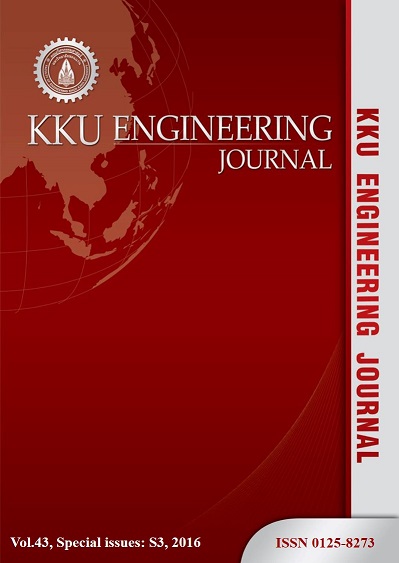Inhibitor formation during glucose and xylose production from corncob hydrolysate and the effect to bioethanol production
Main Article Content
Abstract
Corncob dust was potentially used as an alternative carbon source for ethanol production due to the fermentable sugars derived from acid hydrolysis. Under the optimum condition, glucose and xylose were the major sugars obtained from the hydrolysate with less than 0.4 g/l furfural and 5-hydroxymethyl furfural (5-HMF) also found. The corncob dust hydrolysate was examined for ethanol production by the xylose – fermenting yeast, Candida shehatae TISTR5843. The results revealed that the inhibitors might affect cell growth due to the slow change of biomass observed at the early stage cultivation. Glucose was gradually consumed, while xylose was utilized by yeast during the ethanol production. Therefore, the corncob dust hydrolysate was potentially used for cell mass and ethanol production by Candida shehatae TISTR5843.
Article Details
This work is licensed under a Creative Commons Attribution-NonCommercial-NoDerivatives 4.0 International License.



